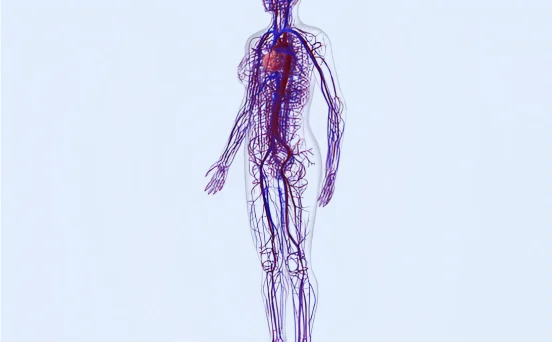Cataract Surgery are among the most common eye conditions affecting people as they age. Characterized by the clouding of the natural lens of the eye, cataracts can develop slowly over time, often without noticeable symptoms in the early stages. However, as they progress, they can significantly impact vision, making it difficult to perform daily tasks such as reading, driving, or recognizing faces. While not every cataract needs immediate surgery, there are specific symptoms that indicate the need for cataract removal.
Recognizing these symptoms early and consulting an eye specialist can help prevent further deterioration of vision in retina.
Symptoms Indicating the Need for Cataract Surgery
Blurry or Cloudy Vision
One of the earliest and most common signs of cataracts is blurry or cloudy vision. It may feel like you’re looking through a fogged-up window or a piece of frosted glass. This blurriness can affect both distance and near vision, making activities like reading small print or watching television more difficult. While new glasses may temporarily improve clarity, they will not solve the underlying issue. If your vision becomes persistently cloudy, it is a strong indicator that the cataract has progressed enough to consider surgical removal.
Increased Sensitivity to Light and Glare
Another frequent symptom indicating the need for cataract surgery is heightened sensitivity to light, especially bright sunlight, oncoming headlights while driving at night, or indoor lighting. People often describe glare as a painful or distracting burst of light that affects their ability to see clearly. This is caused by the scattering of light inside the clouded lens, and it becomes more pronounced as the cataract matures. If light sensitivity begins to interfere with your comfort or ability to drive safely, it’s time to seek an evaluation.
Difficulty Seeing at Night
Cataracts can significantly reduce your night vision, which is often one of the earliest impairments noticed. You may find it harder to navigate dimly lit environments or notice that your vision becomes more compromised after dusk. Driving at night can become particularly challenging, especially due to the glare from streetlights and headlights. If you are avoiding nighttime activities or feel unsafe driving after dark, these are critical signs that cataract surgery might be needed.
Halos Around Lights
Many individuals with cataracts report seeing halos or rings around lights. These halos may appear in a variety of colors and are most noticeable at night or in low-light environments. They are caused by the way cataracts scatter incoming light as it passes through the lens. While this symptom may initially seem minor, it can become a significant obstacle, particularly for tasks that require focus and precision at night. Persistent halos around lights should not be ignored, as they may indicate worsening cataracts.
Frequent Changes in Eyeglass or Contact Lens Prescription
If you find yourself needing new glasses or contact lenses more often than usual, it may not be your vision simply “changing with age.” Frequent prescription changes can be a sign that a cataract is developing or progressing. Although vision may temporarily improve (known as “second sight” in some cases), this is typically short-lived. When constant changes in lens prescriptions no longer provide the clarity you need, it’s a sign that the cataract is progressing and surgical intervention might be necessary.
Faded or Dull Colors
Cataracts often cause colors to appear less vibrant or more yellowed. This occurs because the clouded lens affects the way light and color pass through to the retina. Whites may seem off-white, and colors can appear washed out. Patients often notice that their clothing, artwork, or the environment around them lacks its usual vibrancy. If you find that your perception of color is declining, and it’s interfering with your daily life or enjoyment of activities, it may be time to consider cataract removal.
Double Vision in One Eye
Double vision in one eye—also known as monocular diplopia—can be another symptom of cataracts. This is different from the double vision caused by neurological conditions, as cataract-related double vision usually resolves when the eye is covered. The cloudy lens can split or bend light rays in unusual ways, resulting in overlapping or multiple images. If this symptom persists and is isolated to one eye, cataract surgery can often resolve the issue completely.
Needing Brighter Light for Reading or Tasks
As cataracts develop, many people notice that they need brighter lighting to see clearly, especially for reading or close-up tasks like sewing. You may find yourself turning on additional lamps or increasing screen brightness just to see text or objects clearly. Although this may help temporarily, it signals that the cataract is interfering with the eye’s ability to properly process light. Over time, brighter light becomes less effective, making surgery the next logical step.
Visual Disturbances Impacting Daily Activities
Perhaps the most critical indicator for cataract surgery is when visual disturbances begin to interfere with your day-to-day life. This may include:
- Struggling to read street signs while driving
- Difficulty recognizing faces
- Challenges performing job tasks or hobbies
- Avoiding social situations due to vision concerns
If you are starting to modify your lifestyle, reduce your independence, or rely more heavily on others due to vision problems, cataract surgery can dramatically improve your quality of life.
When to See an Eye Specialist
Cataracts develop slowly, and not every case requires immediate surgery. However, if you experience one or more of the symptoms listed above, it is essential to consult an ophthalmologist for a comprehensive eye exam. The doctor will assess the severity of the cataract, evaluate how it’s affecting your daily life, and discuss whether surgery is appropriate at that time.
Some patients are hesitant about surgery due to age or fear of complications. It is important to understand that modern cataract surgery is safe, quick, and highly effective. Performed as an outpatient procedure, most patients recover rapidly and experience a significant improvement in vision.
Benefits of Timely Cataract Surgery
When performed at the right time, cataract surgery offers several benefits:
- Restoration of clear and sharp vision
- Improved color perception
- Better night vision
- Enhanced independence
- Lower risk of falls or accidents
- Improved mental well-being and social engagement
Delaying surgery for too long can lead to complications, including increased difficulty removing the cataract or developing other eye conditions such as glaucoma. That’s why early identification of symptoms and timely treatment are crucial.
Conclusion
Cataract symptoms may begin subtly, but they can progress to severely impact your life and independence if left unaddressed. Blurred vision, glare, poor night vision, faded colors, and double vision are all potential signs that the natural lens of your eye has become clouded. If these issues begin to interfere with daily tasks, hobbies, or personal safety, it’s time to consider cataract surgery.
Modern cataract procedures are safe, minimally invasive, and can significantly enhance visual clarity and quality of life. Consult your ophthalmologist if you recognize any of these symptoms. Early diagnosis and appropriate treatment can help you enjoy sharper, clearer vision and a more active lifestyle.























